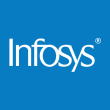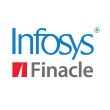Cash management – trends and priorities
While real-time data remains an ideal, the cash management process needs first to adapt to expanded ecosystems and networks. Justin Silsbury and Manish Patni, lead product managers at Infosys Finacle, explain.
The principles around cash management have remained fundamentally the same as time has passed – the idea is that banks need to help businesses of all shapes and sizes manage their working capital to efficiently and effectively run the business and keep the wheels turning.
But in the new economic environment of inflation and high-interest rates, this is becoming harder to achieve. Indeed these conditions have not been seen for many years, and banks and businesses alike have got used to a low-interest rate environment and the availability of cash at a relatively low cost. Add to that geopolitical instability, supply chain issues, and a general backdrop of macro-economic challenges, and there is no doubt this creates a more challenging environment for cash management – the consequences of getting it wrong are high in terms of cost and in terms of a business being able to stay agile and manage its day-to-day operations.

The cash management process needs to adapt to expanded ecosystems and networks
Infosys Finacle’s Silsbury explains: “The onus is on the bank to provide an optimal service to its business clients, so it needs to have a very good handle on its own liquidity; what are the assets versus the liabilities and is there any mismatch? Has the bank taken steps to reduce and mitigate against systematic risk?”
His colleague Patni points out that these issues will likely be front of mind at many if not most, banks. “This is something that banks are likely to be very aware of given the recent failure of Silicon Valley Bank. A bank needs a clear overview of what they can and cannot lend and on what terms. Communication needs to be clear to the treasurers within each company.”
Indeed, transparency and visibility are key. To that end, the perpetual demand is for real-time information so as to be able to have optimal cash management and to know what the position is at any given time as well as to be able to see what is coming through in terms of assets and liabilities to know what the impact will be. This has been the holy grail for a long time.
Real-time information and data have been available in the retail banking space for some time now, and there is some frustration that it has not yet been possible in the business space as yet. “There are lots of pilots running to see how the blockchain could help with this and whether a move to a central bank digital currency (CBDC) could help in terms of transparency and real-time monitoring and ongoing cash management ability,” says Silsbury.
The issue is that the retail space is high volume and low transaction value, so the infrastructure runs on a scale basis. However, the corporate cash space is less homogeneous; companies make and receive payments of all shapes and sizes and on all imaginable timeframes every day of the week. There is no pattern, and thus scale is a harder proposition.
Thus instead of having a real-time view, an intraday view is more possible regarding the banks’ own intraday funding requirements and keeping the bank well within the compliance boundaries, i.e., Basel 3. Following that, the banks know they have a buffer and can make realistic and up-to-date lending propositions to their corporate customers.
Silsbury comments: “There is also the question of whether the corporates could actually make best use of real-time information; many are still working on basic Excel spreadsheets or manual methods. Sometimes they would like and need real-time information. Still, at other times, it suits the corporate better to time payments in batches, for example, after a large payment has been received to keep cash management at optimal levels.”
Ecosystems
A further complexity is the rise of the ecosystem. Banks are actively looking at embedded finance, where banks open up their application programming interfaces (APIs) into various markets and offer Banking-as-a-Service (BaaS) capabilities to new customers – this is not dissimilar to a car showroom offering finance options, but all online. With the power of digitisation now evident, the potential to create a huge ecosystem is evident, and thus, tracking, following, and monitoring all those payments rails and the resulting cash management becomes complex.
The answer has a componentised approach where corporates can take APIs in a microservice approach so they get what they need and none of what they don’t. In this way, the technological relationship between banks and corporates edges forward in small incremental steps.
“This creates functional ecosystems that will be ever more important for cash management as the payments and receivables ecosystems themselves become more complex. To this end, some banks are setting up their own digital banks that sit in parallel to the parent company to get traction with the technology and to act as a technology layer over the top to move the whole cash management proposition on,” says Silsbury.
He also points to several niche players within the cash management area where a partnership means an ecosystem of best-of-breed components.
“This is particularly helpful when dealing with SMEs – for example, if they are finding reconciliations too much, then we can extend that modularity to them,” he says.
“A lot of the discussions we have with banks is on how to better service SMEs who rarely have the breadth and depth of capabilities like the bigger corporates. So the whole ecosystem approach is very suitable to this largely underserved sector of the banking community.”
Justin Silsbury, lead product manager, Infosys Finacle
“Indeed, a lot of the discussions we have with banks is on how to better service SMEs who rarely have the breadth and depth of capabilities like the bigger corporates. So the whole ecosystem approach is very suitable to this largely underserved sector of the banking community,” Silsbury continues.
Thus, if an SME can absorb the bank’s solution, that takes away the cost and the headache of trying to make their own systems and then linking them to the bank. “In this model, the bank then becomes agnostic and can deal with all the SME’s links and perform the cash management function on their behalf as well as being one of the lenders,” Silsbury concludes.
Sponsored by Infosys Finacle
Infosys Finacle is an industry leader in digital banking solutions. We partner with emerging and established financial institutions to inspire better banking. Our cloud-native solution suite and SaaS services help banks to engage, innovate, operate, and transform better.












































